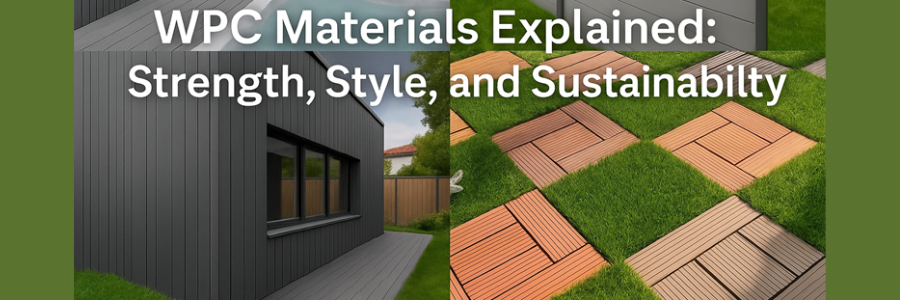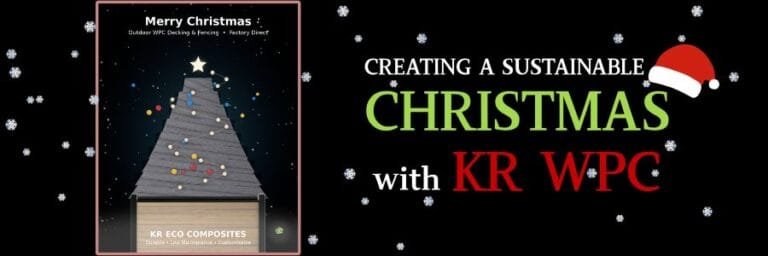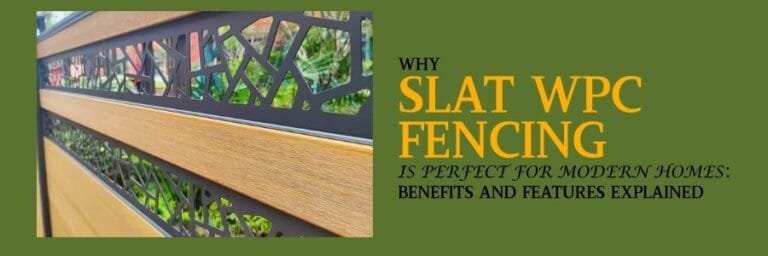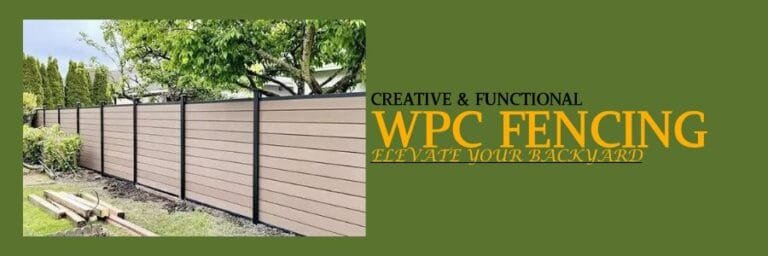Introduction: A New Generation of Outdoor Materials
Did you know that the “post-heating” required for thermoforming WPC is only a maximum of 200°C, reducing impact on the environment. In comparison, production-related CO2 emissions of aluminum are 45 times higher than WPC. According to a review paper in Composite Structures, terrace boards account for an estimated 85% of the WPC market in Europe. The massive adaptation of the WPC material is mainly due to its exceptional properties, exhibiting strength, style, and sustainability.
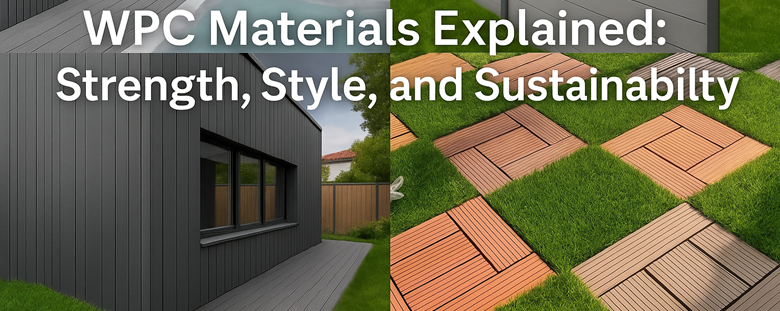
The WPC material is a composite material that is engineered from recycled wood fibers and plastics. The proportion of bio-ingredients in WPC can be up to 80% by volume. The remaining 20% is plastics and additives. The common thermoplastics used are polyvinyl chloride (PVC), polypropylene (PP), and polyethylene (PE). The combination results in a material that is weather-resistant, low-maintenance, and a sustainable alternative to natural wood.
While there are tons of suppliers for WPC material, KR WPC uses in-house produced plastic particles to control costs. Their strong design department releases new styles every quarter and keeps up with the trends, producing new molds every month. KR WPC masters in the fourth generation of wood plastic composite (WPC) material. Let’s understand what makes WPC material ideal for a multitude of applications.
WPC Technical Features: Fusing Nature with Technology
Structural and Climate Durability
WPC is an ideal material for all weather situations. The material can withstand the test of time and maintain its structural integrity. Let’s examine the key aspects that make WPC an ideal choice for decking, wall cladding, and fencing.
- Material Warping: WPC has the right combination of tensile strength, hardness, flexural strength, modulus of rigidity, and stiffness. It keeps the finished product from wrapping and maintains its shape, unlike wood.
- Moisture and Fungal Rotting: Every brand might have a different approach to the production of WPC. KR WPC uses 60% wood fiber, 30% high-density HDPE plastic, and 10% chemical additives, which give additional resistance to moisture. Rotting results from moisture taking hold in the material, and WPC prevents it exceptionally.

- Cracking Mechanical Stress and Moisture: In woods, cracking is a common phenomenon, especially in areas with high moisture fluctuations. Mechanical stresses can also cause the wood to crack, but WPC has exceptional strength, resistance to moisture, and can bear higher mechanical stress while maintaining its shape. WPC is generally less prone to cracking or splintering when drilled or screwed.
- UV Resistance: Manufacturers will have their own unique recipe for the production of WPC. Generally, hindered amine light stabilizers (HALS), UV absorbers, and certain pigments like titanium dioxide are mixed into the plastic component of the WPC to impart UV-resistant properties.
- Cellulose-Free Pest Prevention: Pests feed on cellulose inside the WPC to take control. KR WPC is cellulose-free, which can prevent pests. The presence of wood, which can be a source of food source is wrapped with plastic, making WPC hostile for pests.
Comfort and Safety in Use
Wooden fences, decks, and wall cladding come with their challenges for the users. Wood can have splinters and may cause slippage in situations like rain. In comparison, WPC material offers splinter-free and slip-resistant surfaces that are ideal for homes, commercial spaces, and public areas.
The formation of WPC involves mixing the raw material homogenously, and then the mixture is blended together to a dough-like consistency. Later, the mixture is extruded through a die to create long, continuous profiles like decking boards or window frames. The surface can be smooth or matte, depending on the market demand.
KR WPC offers additional fire-retardant properties, which make WPC safer than typical wood. Their product meets the EN 13501-1 and ASTM E84 criteria, which are used to classify fire performance.
Aesthetic Versatility
In comparison to wood, the WPC material offers versatility in aesthetics. They offer many color options like teak, walnut, and coffee, as well as modern options like gray and ebony. WPC also comes in realistic wood grain structure and 3D patterns that mimic real wood. Users can pick a glossy or matte finish depending on their preference.
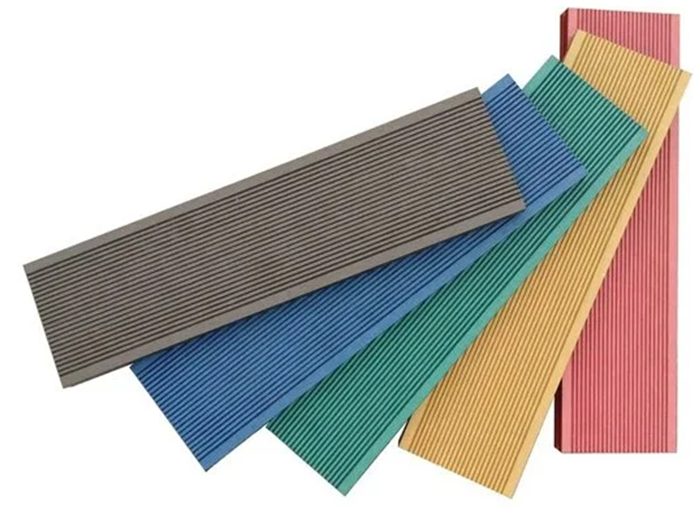
WPC Excels in Real Projects
Sure, wood plastic composite (WPC) offers extensive advantages over wood, but is it practical for real-life projects? Analyzing its applications helps consumers understand how the strength, style, and sustainability of WPC make it the ideal material for a wide range of real projects. Here are three such examples:
A. Composite Decking for Patios and Pools
Construction with patios and pools needs a strong deck. The presence of moisture and factors such as rain and UV light can degrade other materials quickly. WPC, with its exceptional properties, provides a strong, beautiful, and easy-to-install flooring solution. The owners can pick the right color to match the surroundings accurately.
B. WPC Wall Cladding
To give homes and workplaces a modern look, interior designers are opting for WPC wall cladding. They offer clean aesthetics with sleek shapes that can warm up any interior. Moreover, they offer excellent lifetime and can be used in building facades, interior, and exterior walls.
C. Composite Fencing Systems
Fencing requires a significant amount of material. Using a sustainable material like WPC can help prevent deforestation and reduce pollution. Unlike wood, WPC fencing does not require regular staining, painting, or sealing. A simple hose and brush are sufficient for cleaning WPC-based composite fencing systems..UV inhibitors within its material prevent fading, and they come with fixtures that promote DIY installation techniques, making them convenient for installation.

Inside the WPC Lab: Continuous Innovation
The room for innovation in WPC material is high, as they are man-made composites. The applications of WPC are ever-expanding. Let’s analyze how WPC supports continuous innovation:
Evolving Formulas and Next-Generation Materials
The additives are the key to changing WPC material. The introduction of bio-based binders, higher recycled content, and improved structural composition is leading to higher strength and sustainability. Coupling Agents, UV stabilizers, flame retardants, and bio-based materials and processing aids are leading to better performance of WPC under sunlight, mechanical stresses, moisture, and carbon footprint.
Lab Testing and Quality Assurance
Another important quality of WPC is its extensive lab testing. The methods are continuously evolving, leading to better field results. Stress tests, color stability trials, moisture, and freeze-thaw simulations are performed inside the lab and also assess a variety of performance aspects. Mechanical testing ensures strength, and durability assessments ensure resistance to decay, fungal growth, and fire, with advanced testing methods like those for intumescent flame retardants. By simulating WPC entire lifecycle brands like KR WPC ensure that the WPC products meet or exceed industry standards.

The Future of WPC
WPC has a very promising presence in the market. Europe is the leading consumer of WPC material. However, owing to the expected CAGR of 8.3% from 2023 to 2032 shows a promising future for WPC. A massive Asia-Pacific region is rapidly acknowledging the strength, style, and sustainability of WPC materials, making them the fastest-growing market for WPC.
The modern smart composites come with integrated modular systems, lighting, or eco-features. They incorporate smart technology for things like remote monitoring of structural integrity and automated climate control. The development of bio-based plastics and other sustainable additives will continue to make WPCs a highly attractive option for environmentally conscious consumers and builders.
This focus on innovation and sustainability ensures WPCs will remain a key player in the construction and automotive industries for years to come. If you are interested in premium and high-end WPC material, then check out KR WPC. They offer flooring, wall cladding, and decking, as well as fencing, louvers, and pergolas. They also specialize in customizable options, allowing for a variety of colors, lengths, and models to fit specific project needs.
FAQ
1. How long does WPC last in outdoor environments?
A premium-grade wood plastic composite material like KR WPC will last 20 years or more. It’s mainly due to the presence of stabilizers and other additives that add to the strength and make the material resistant to moisture, pests, UV light, flame, and rotting.
2. Can WPC decking or fencing fade in the sun?
Materials such as wood and plastics can exhibit fading color under sunlight. In comparison, high-end WPC can withstand UV light and maintain its aesthetic appeal. High-end WPCs often use UV stabilizers and co-extrusion technology to create a protective outer layer.
3. Does WPC require sealing or staining like real wood?
No, WPC does not require sealing or staining like real wood. It maintains its color and does not degrade under any weather conditions. All the user needs is a brush and water to clean the WPC material. This low-maintenance characteristic makes WPC a very practical and cost-effective alternative to traditional wood decking and fencing.
4. How does WPC perform in extreme heat or cold climates?
WPC material can withstand up to 100°C (212°F) and as low as -30°C (-22°F), although specific temperature resistance can vary depending on the product’s composition. The material does not become brittle at low temperatures or warp due to fluctuating temperatures.
5. Can I install WPC by myself, or do I need a professional?
Yes, depending on the manufacturer, they provide extensive guidelines to help the installer. KR WPC offers easy-to-install laying boards that utilize clips to accommodate material thermal expansion and contraction. The whole process is simply clip-on, which makes replacing a damaged board equally convenient by just taking out the clips on both sides of the damaged board to remove the damaged flooring and replace your stock decking.

